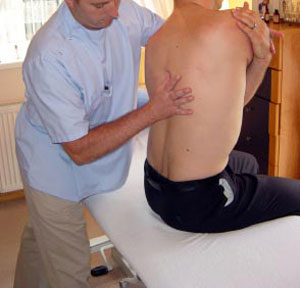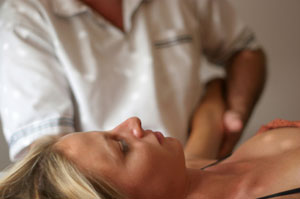Osteopath
Tasks & duties

Osteopaths may do some or all of the following:
-
diagnose problems by questioning and examining patients
-
talk with patients about diagnosis and proposed treatment
-
use movements to treat muscles, bones and joints
-
change and correct the movement of the spine to restore movement and health
-
advise patients on exercise, posture, diet and lifestyle
-
refer patients to other specialists for treatment if necessary
-
get patients x-rayed or conduct other appropriate investigations if necessary
-
carry out workplace assessments for patients who have Occupational Overuse Syndrome (OOS) or any other workplace injuries
Osteopaths often have areas of special interest such as children, geriatrics or sports injury rehabilitation.
Specialisations
Osteopaths may specialise in a particular area such as paediatrics, veterinary or cranial osteopathy.
Skills & knowledge

Osteopaths need to have:
-
knowledge of anatomy, physiology and pharmacology (how drugs affect the human body)
-
an understanding of how the body, particularly the spine and nervous system, works
-
the ability to observe people's body movements to make clear diagnoses of musculoskeletal conditions
-
knowledge of how people behave when they have muscular or spinal pain, and the ability to work out treatment plans and ways to help patients aid their recovery
-
knowledge of manual treatments and methods to alter body functions
-
the ability to keep up to date with new developments in muscular and skeletal medicine
-
knowledge of diseases
-
listening and communication skills
-
problem-solving skills
Osteopaths may develop skills and techniques such as cranial osteopathy (treating trauma to the head) or visceral osteopathy (treating abdominal problems including gynaecological and urinary problems). This allows them to concentrate on specific types of patients including children (paediatrics), aged people (geriatrics) or people recovering from injury (rehabilitation).
Entry requirements
To become an osteopath, you need to have a Bachelor of Applied Science majoring in human biology, or a degree in a similar discipline. You then need to complete a Master's degree in osteopathy. This course is only available at Unitec New Zealand.
All overseas trained osteopaths are required to a sit an exam set by the Osteopathic Council of New Zealand, with the exception being osteopaths from Australia who hold a qualification recognised in New Zealand.
Secondary education
A tertiary entrance qualification is required to enter further training. Useful subjects include chemistry, biology, physics, English and maths.
Training on the job
Osteopaths must attend courses or workshops to maintain and extend their knowledge and skills. This is compulsory for practitioners to maintain their registration as osteopaths. Most regions also have monthly peer group meetings to discuss professional issues that have arisen during practice.
Registration
Osteopaths need to be registered with the Osteopathic Council of New Zealand and hold a current Practising Certificate.
Useful experience
Experience providing other health care services, working in childcare or any work with people is useful for osteopaths.
Related courses
Physiotherapy
For more information, please refer to Career Services.
Document Actions
